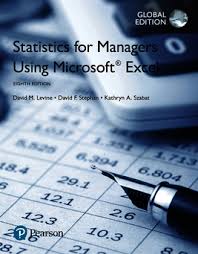COURSE DESCRIPTION
 This course prepares the program participants on the use of statistics in assisting managerial decision making in the business world. Specific topics to be covered include techniques of counting, probability theory and elements of statistics including binomial and normal distributions, descriptive statistics, sampling distributions, statistical inferential procedures for population parameters, simple linear regression and correlation analysis and time-series forecasting.
This course prepares the program participants on the use of statistics in assisting managerial decision making in the business world. Specific topics to be covered include techniques of counting, probability theory and elements of statistics including binomial and normal distributions, descriptive statistics, sampling distributions, statistical inferential procedures for population parameters, simple linear regression and correlation analysis and time-series forecasting.
Stephan, David F., Berenson, Mark L., Levine, David M.. (2014). Statistics for managers using Microsoft Excel (7th ed.). Harlow: Pearson.
